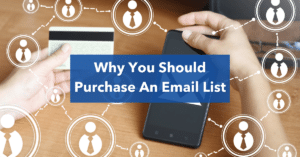
Why Companies Are Going Back To Direct Mailers
Why Companies are Going Back to Direct Mailers For the last few years, email marketing data has been on the rise and at the forefront
“My website is a beast that must be fed,” a real estate broker recently lamented. And the website’s favorite food is content. Your website, email campaigns, and social media channels can’t get enough of it. But is more content better if your audience doesn’t read what you’re writing? If content is the food, readability is the tasty topping that makes anyone want to eat it.
Readability—how easy it is to read and comprehend a document—not only makes your message clear, the search engines will rank you for it. What does “readable” look like? It is well structured, concise, and clear. It uses simple language free of industry jargon, short sentences, and short paragraphs. It’s easy to skim and comprehend.

Creating content is easy, however, creating interesting content can be tough. The content you create needs to be something your audience actually cares about. Your whole goal is to get them to stop what they were doing and pay attention to your content or pick your content over someone else’s. In order to effectively grab their attention, you need to make sure you offer them something unique or word your content in such a way that it is highly engaging.
Once you have their attention and they are reading your particular piece. You need to then, drive them to take an action. Because what use is having content if you aren’t trying to get them to purchase something from you.
Selecting the right topic to write about is a balancing act of entertainment and brand alignment. Careful research should be conducted, prior to selecting the topic to ensure that no effort is being wasted. You’ll want to select topics that have a high search volume and are commonly discussed by your audience.
Google has supplied marketers with a number of tools that help with finding out “what is being searched” on their platform. Google Ads itself, has a built-in keyword planning tool that allows users to view a keyword’s search volume, cost per click, and seasonality. When it comes to picking a topic to write about, first check the search volume for keywords surrounding that topic. This will help gauge how interested people are in the content you are looking to create and can help bring more interested parties to your content after it ranks in the search engines.
Spy on your competitors and examine the topics they are writing about. That being said, make sure you write your own content and don’t steal what someone else wrote word-for-word. Most likely the audience they have is very similar to your own and would be interested in the same things. This is why improving on their content, can help gain you a competitive edge in your industry. Also, this requires far less research in finding a topic to write about, since your competitor likely did that leg work for you.
Every company evolves and new trends are made almost daily. Keeping up with the latest trends in your industry and providing your prospects and clients with the latest information could be the key to setting you above your competitors. An easy way to find what is trending is to use Google Trends to drill down terms and topics your industry is looking for. You could also use Youtube’s trending videos, as inspiration for your content as well.
To determine how readable your content is, put it to the test with the Flesh-Kincaid reading ease score (FRES). The higher the score, the easier it is to read and understand. A score of 0-30 is understandable to college students and a score of 60-70 is understandable to 13-15 year olds. For most businesses, a score of 60-70 is what you’re aiming for. Check out your content’s readability on Read-Able.com.
Does this mean you have to dumb down your message so a teenager can understand it? Not at all. You need to keep your audience’s needs in mind, and that includes their familiarity with your subject. What is does mean, however, is that you should write keeping the following in mind:
Your writing should be direct, avoiding long sentences and rambling thoughts. Using shorter, clear words also helps. Your final article should be logical, clear, and free of redundancy.
Who is your audience, what are their needs, how much do they know about the subject? Never assume that someone who is interested in your product or service knows as much about it as you do. And definitely don’t assume that fancy words and jargon will impress them. By knowing your specific audience, you can assess how much knowledge they have to keep your article at the appropriate technical level.
Reading long blocks of text interferes with reader comprehension. This is especially true when someone is reading on a screen. Keeping your sentences and paragraphs short breaks up the text and makes the reader more likely to absorb your message.
Most writers will tend to repeat themselves in their first draft. Don’t be in a rush to post your content. Let the article sit for a day, then go back and read it—or better yet, have someone else read it. And then don’t be afraid to cut. Anything that doesn’t directly advance your point, delete. A little bit of ruthless editing will help you draft those clear and concise articles you’re going for.
Check out this article’s score, then run some of your content through a readability test and see where it lands on the scale.
Once you’ve developed your content, it’s important that it is deployed appropriately and through the right channels. Many times companies will deploy their content through Social Media and/or Email. For social media, this is great for deploying your message to your current audience and followers. Going a step further, posts on social media platforms can be shared with niche groups that your audience is a part of. Email deployment has a huge benefit that social media doesn’t. With email marketing, you can reach new people within your audience by purchasing an email list. With that being said, it is important to pay attention to email deployment guidelines for 3rd party email send lists.
"*" indicates required fields

Why Companies are Going Back to Direct Mailers For the last few years, email marketing data has been on the rise and at the forefront

How to Create a Personalized Direct Mail Piece Adding personalized elements to your mail piece increases response rates. Mail recipients prefer to receive mailers that

Using Business Mailing Lists to Drive Leads Finding new business leads can be a tricky process, whether you are relying on yourself, your marketing team,

How to Develop Content that Works “My website is a beast that must be fed,” a real estate broker recently lamented. And the website’s favorite

8 Reasons to Purchase an Email List An accurate email list has the power to jumpstart new businesses or give some much-needed traction to older

Why Rent or Buy an Email List? When it comes to email marketing, you may have heard that renting or buying email lists is always
